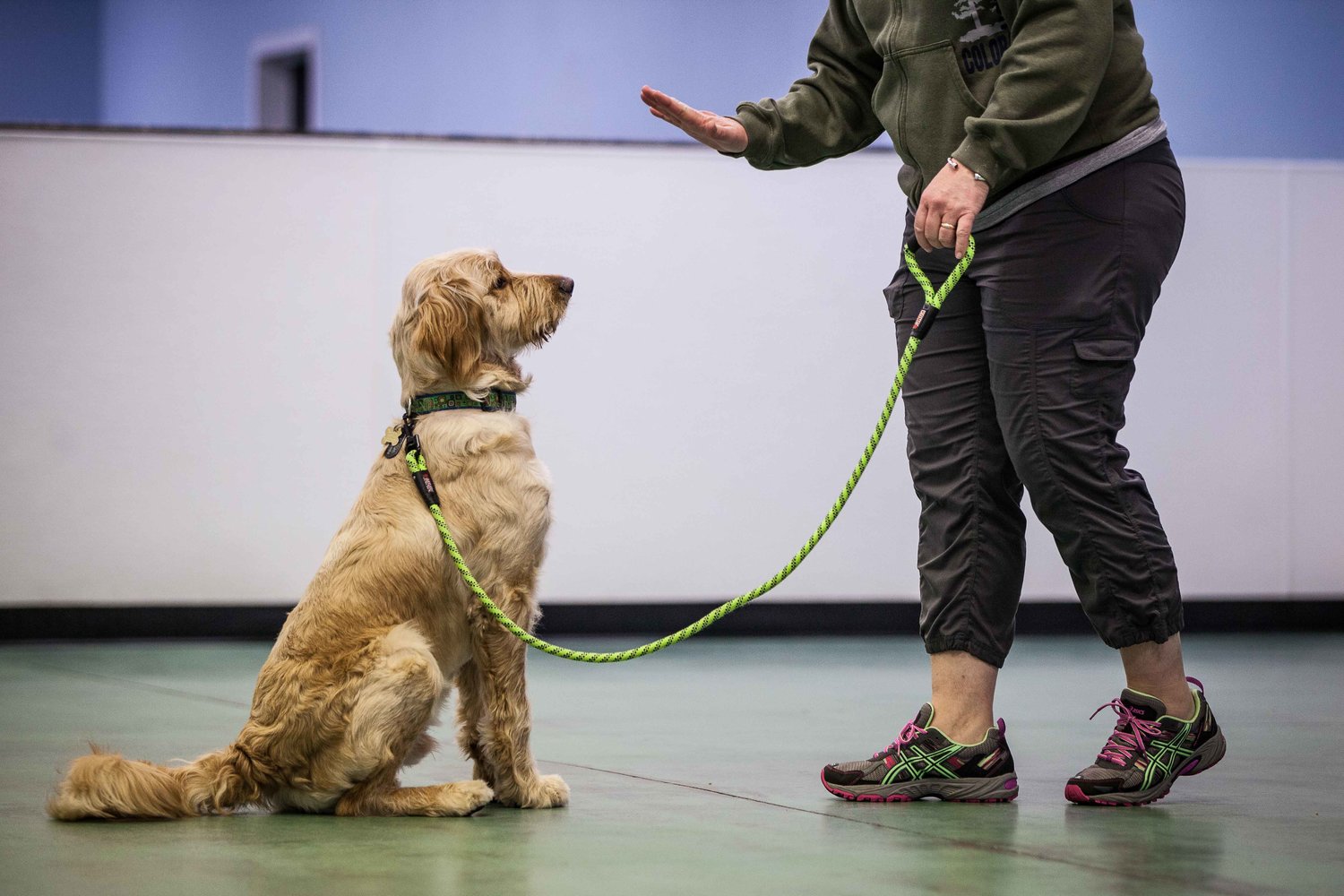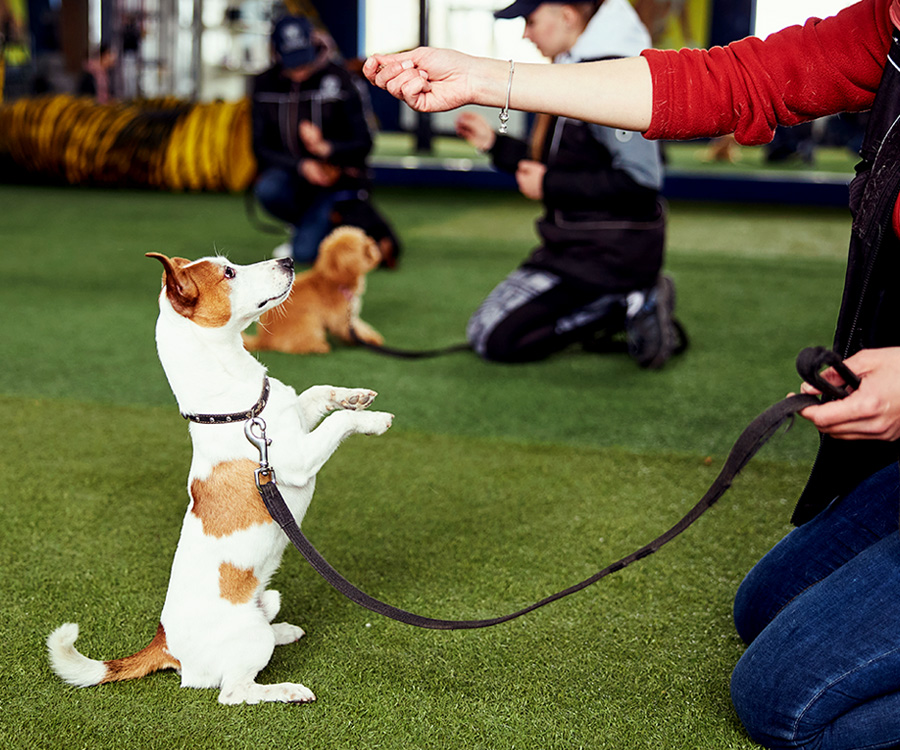Leading Dog Training Methods Every Owner Need To Know
Comprehending efficient pet training techniques is crucial for any kind of family pet owner aiming to cultivate a harmonious connection with their canine buddy. Amongst one of the most noticeable methods declare reinforcement, clicker training, and leash training, each offering distinct advantages that add to a mannerly pet dog. The success of these methods typically pivots on the proprietor's dedication to consistency and persistence. As we discover these fundamental methods, it comes to be evident that grasping their subtleties can considerably impact the training experience and the canine's overall habits. What are the necessary components that will make sure these methods are executed efficiently?
Favorable Reinforcement Strategies
Using favorable reinforcement strategies is necessary for efficient pet dog training, as it fosters a relying on bond in between the pet dog and the trainer. This approach focuses on satisfying desirable habits instead of punishing unfavorable ones, developing a setting conducive to learning. Incentives can include deals with, appreciation, or play, which motivate pet dogs to repeat the behaviors that gain them these rewards.
Favorable reinforcement is rooted in the concepts of operant conditioning, where habits is affected by its consequences. By continually fulfilling certain actions, fitness instructors can form a pet's behavior gradually. As an example, a canine that rests on command and gets a reward is more most likely to duplicate that actions in the future.
Furthermore, this technique boosts the pet's enthusiasm for training sessions. When dogs link training with positive experiences, they are much more involved and responsive. Beyond immediate therapy, positive reinforcement encourages a collaborative connection between the canine and fitness instructor, reducing anxiety and anxiety.
To make the most of efficiency, it is vital to supply incentives quickly, guaranteeing the pet dog attaches the behavior with the reinforcement. Essentially, positive support strategies not only yield better-trained dogs but additionally promote a harmonious collaboration in between pet dog and proprietor.
Remote Control Training Approach
The clicker training method is a very effective method that builds on the principles of favorable support by including an unique sound to mark desired habits. This method utilizes a tiny handheld gadget that produces a clicking sound, allowing trainers to communicate with their pet dogs in a instant and clear way. When a pet dog does a habits that the owner wants to encourage, the remote control is activated, adhered to by an incentive, typically in the kind of treats or praise.
The secret to effective remote control training lies in uniformity and timing. It is critical to click at the specific moment the wanted behavior occurs, guaranteeing that the pet connects the audio with the activity and the subsequent incentive. This technique not just improves interaction however additionally promotes a more powerful bond in between the owner and the pet, as it urges interaction and communication throughout training sessions.
Clicker training can be related to a selection of commands and actions, from fundamental obedience to a lot more complicated techniques. Its flexibility and effectiveness make it a favored method among expert instructors and family pet owners alike, leading the means for a receptive and well-trained canine buddy.

Leash Training Essentials
Effective chain training is important for making certain a enjoyable and secure walking experience for both pets and their proprietors. A level collar may work for some pets, while others might profit from a harness that decreases pulling.
Present your dog to the chain slowly, enabling them to explore it in a comfortable setting. Once they are accustomed, technique loose-leash walking. This involves rewarding your pet for walking beside you instead than pulling in advance. Use treats and appreciation to reinforce wanted actions, and make sure to remain assertive and calm.
If your pet begins to pull, stop strolling immediately. Additionally, method numerous strolling settings to assist your dog adjust to disturbances.
Regular method will certainly strengthen your dog's understanding of leash etiquette. Bear in mind that chain training is an ongoing process; patience and consistency will certainly yield the most effective results, promoting a positive experience for both you and your canine friend.
Socializing Techniques
Socializing is a critical aspect of canine training that must preferably start throughout puppyhood yet can be advantageous at any age. Effective socializing aids canines establish confidence and reduces the possibility of behavior concerns. To implement effective socializing methods, reveal your dog to a selection of settings, people, and other pets.

Start with regulated setups, such as puppy courses or look at this web-site organized playgroups, where young pet dogs can interact safely. Gradually introduce your pet to new experiences, consisting of various noises, surface areas, and tasks. Guarantee these experiences are favorable and fulfilling to develop a sense of safety.
For adult pet dogs or those lacking direct exposure, start with low-stress situations. Short, positive communications with calm pets and pleasant human beings can produce favorable organizations - Dog training. Make use of treats and praise to reinforce desirable habits throughout these experiences
Monitoring your pet's body language is crucial; signs of concern or aggressiveness must be resolved right away, either by eliminating the canine from the situation or rerouting its focus. Constantly revealing your pet to varied stimulations will certainly promote flexibility, making it an all-around buddy capable of thriving in various settings.
Uniformity and Persistence
Acknowledging the value of uniformity and perseverance in pet training is vital for attaining lasting outcomes. Training a canine is a gradual procedure that needs an organized strategy and unwavering dedication from the proprietor. Each command or habits have to be reinforced consistently to help the dog recognize what is expected of them. Irregular training can bring about complication, making it tough for the canine to understand habits or commands, eventually hindering progression.
Canines, like humans, discover at their very own rate. This fosters a trusting relationship in between the pet and proprietor, motivating a more passionate and willing student.
To cultivate consistency and persistence, develop a normal training routine, make use of the same commands, and make sure that all household members apply the very same training a knockout post principles - Dog training. By doing so, you create a steady atmosphere for finding out, allowing your canine to create and flourish right into a mannerly companion

Conclusion
Finally, reliable pet dog training methods, such as positive support, remote control training, and appropriate leash training, are vital for fostering a healthy and balanced owner-dog partnership. In addition, carrying out socialization strategies and keeping consistency and patience throughout the training procedure contributes considerably to a canine's overall health. By integrating these techniques, pet dog owners can facilitate the growth of well-adjusted, obedient pets, ultimately improving the top quality of life for both the pet dog and the proprietor.
Among the most prominent techniques are favorable reinforcement, clicker training, and leash training, each offering special benefits that add to a well-behaved canine. As we explore these essential techniques, it comes to be evident that understanding their subtleties can significantly affect the training experience and the canine's overall habits.Making use of positive support strategies is important for effective pet dog training, as it fosters a trusting bond between the instructor and the canine.In final thought, reliable canine training strategies, such as positive reinforcement, clicker training, and correct chain training, are vital for cultivating a healthy owner-dog connection. By incorporating these approaches, dog proprietors can promote the growth of well-adjusted, obedient animals, eventually enhancing the high quality of life useful source for both the pet and the proprietor.